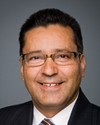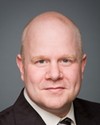Thank you, Mr. Chair.
Mr. Sweetman, I don't know if your French is good, but I will do mine in French.
As an elected official in Quebec, we are always walking a bit on eggshells when we come to issues related to health care because, in Quebec, this is a fully provincial jurisdiction.
Still, I would like to take advantage of your experience because you are very interesting witnesses. I would like to take advantage of your knowledge to determine whether certain administrative solutions or ways of doing things could help us. We are talking about the lack of human resources. Sometimes the solution is to have more human resources, but it may also mean doing things more efficiently. So I would like to appeal to your pan-Canadian experience on the matter.
I am from a rural region where there is no major city and no city larger than 30,000 people. There are a lot of small towns of 500 or 600 people, and there is a crucial need for doctors who want to stay in the regions. I think the same problem exists in Saint-Pamphile and in Moose Jaw. I don't think it is specific to eastern Quebec.
One of the solutions we've recently heard about involves offering incentives so that trained doctors go and live in the regions. I know that, in Australia, they have addressed the problem from the opposite end, meaning that the Australians choose successful students in the regions and encourage them to become doctors. So when they become doctors, returning to live on the mountain, near the river or the ocean in a small community is something they want to do. It isn't necessary to offer them bonuses to go back to a way of life they enjoy. The Australians have been very successful with this approach.
Would this solution be plausible in Canada to help the regions finally have doctors? What do you think, Mr. Berthelot?



